A new mural with an educational message has the Midtown neighborhood of Harrisburg buzzing. Sprocket Mural Works, an all-volunteer nonprofit, is making efforts to uplift Harrisburg with art.
“The Pollinators” is one of Sprocket’s newest featured murals, painted in the summer of 2021 by Harrisburg artist Gloria Jean Martin. With the help of a Department of Environmental Protection (DEP) Environmental Education grant, the mural teaches residents about the importance of pollinators like honeybees to a healthy environment.
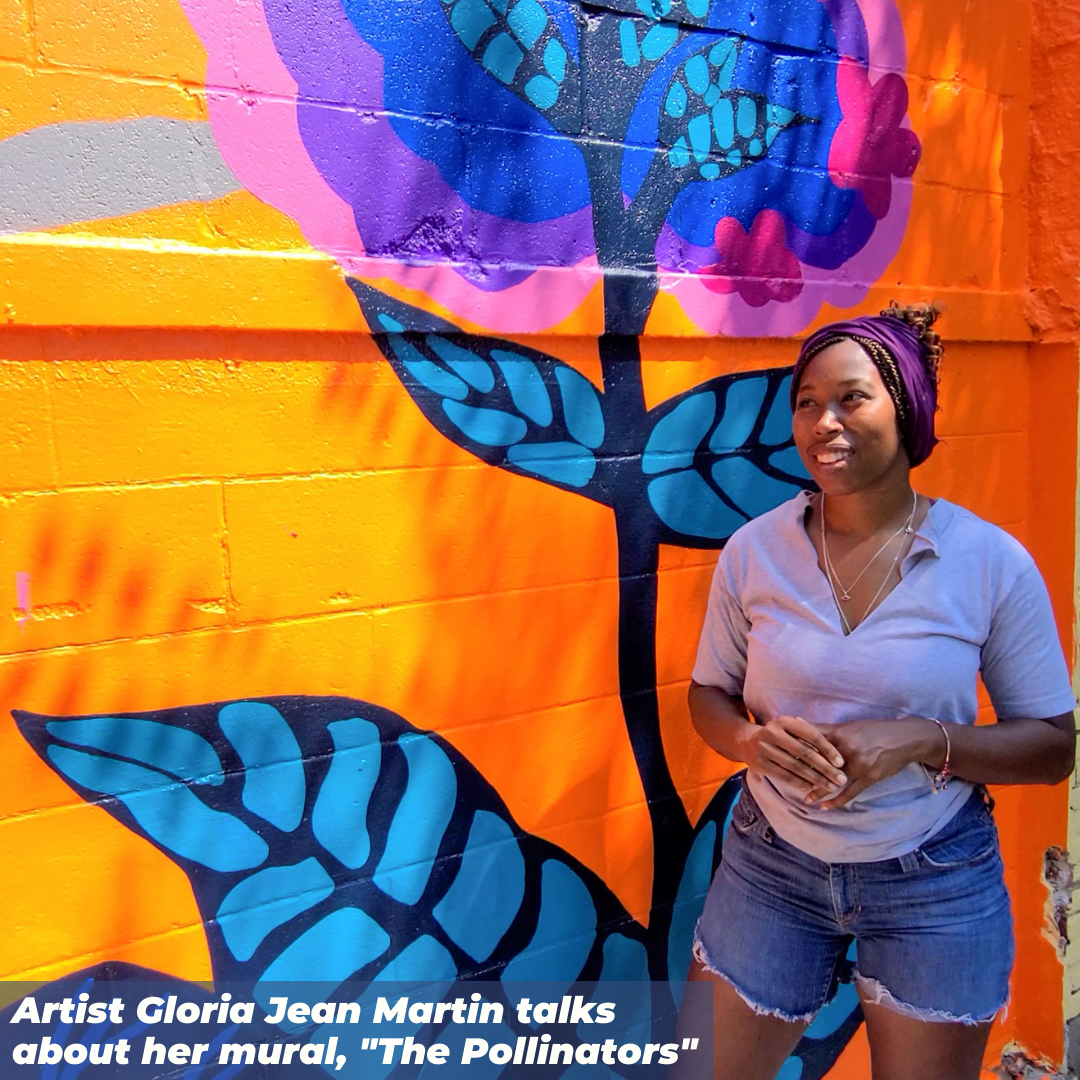
Sprocket’s 47th mural project is an element in the revitalization and cleanup efforts of the Patrick Alley Pocket Park in Midtown Harrisburg. Sprocket Mural Works, Friends of Midtown, neighbors, and the surrounding community wanted to transform this space from an unused alleyway into a pollinator-friendly garden.
“The project came about thanks to a multitude of community connections,” said Karen Hendricks, Sprocket’s Public Relations Director. “Our friends at Yellow Bird Café have appreciated our creation of a 2019 mural next door, at the entrance to Patrick Alley, near the Broad Street Market. This led to a bigger community conversation, also involving the neighborhood organization Friends of Midtown, about how the rest of Patrick Alley could be improved. Sprocket had never undertaken a mural project with multiple experiential components before, but we agreed to facilitate not only a mural, but a neighborhood clean-up and revitalization project with accompanying gardens complete with a rain barrel.”
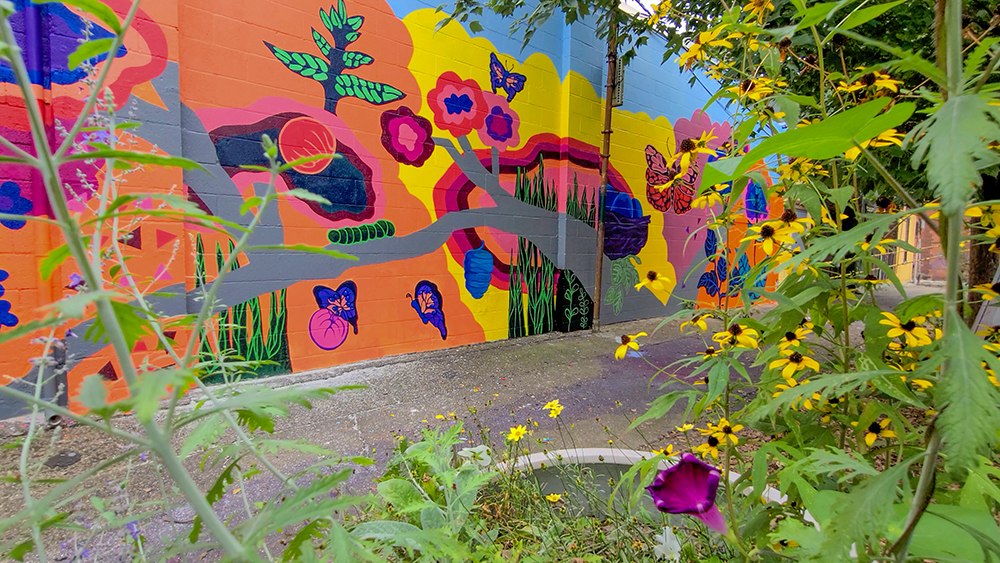
The alleyway project started off with volunteers cleaning up trash and replacing weeds with flowers and native plants donated by Manada Conservancy. The project is supported by a DEP Environmental Education mini-grant, to support educating the community about climate change, the decline of the honeybee, and positive human actions.
Martin then used her artistic talents that she’s held on to since elementary school to form a vision for her mural that started with a sketch. “My vision was to use a combination of flowers and pastel colors. When I came to see the wall, the design I had in mind changed as I drew the plants from observation onto the wall,” said Martin.
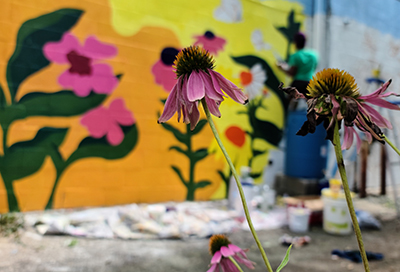
Nature is one of the top themes people want to see when Sprocket Mural Works asks for community input with mural designs. Luckily, that theme comes naturally for Martin. Painting nature is what she knows and reflects who she is, which allows her to add her own touch of self-expression to the mural as well.
“I paint a lot of nature in my work and a lot of things that deal with spirituality, herbal health and wellness. So, including those things in this mural represents who I am and reflects what I do naturally,” said Martin. In her mural, she includes flowers, bees, and butterflies.
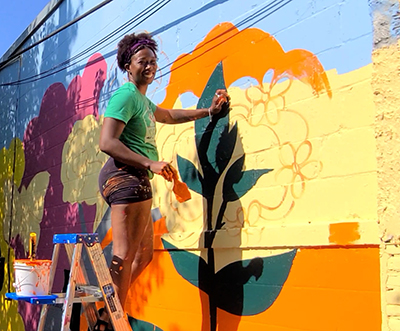
The mural’s theme sparked an educational component, inspiring Sprocket Mural Works to ask for DEP’s support.
“Exploring floral and pollination themes led us to seek DEP funding, to tie into a greater community conversation about the importance of native plants, pollinators such as honeybees, and the effects of climate change. We are so very grateful to the DEP for partnering with us, as we understand it’s the department’s first-ever sponsorship of a mural as an educational tool. And rather than a one-time educational event, the mural is sure to spark community conversations for years to come,” said Hendricks.
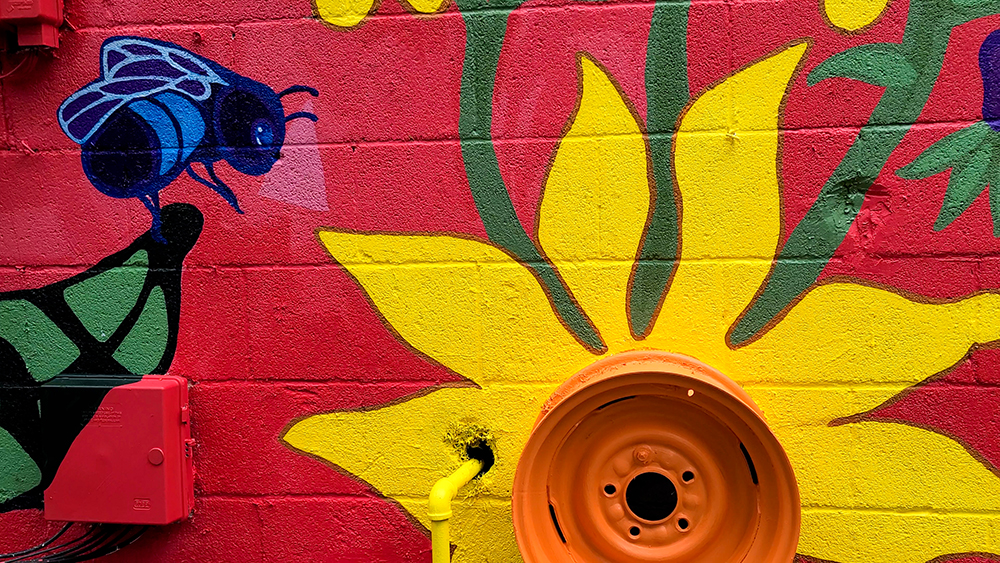
Hendricks gave us a full visual of what visitors can expect to see:
“Visitors walking through the pocket park can first gain a greater appreciation for our Pennsylvania farms, and all the produce they provide, via the mural at the corner of Third and Sayford Streets, at the alleyway’s entrance,” Hendricks said, to set the scene.
“As visitors take additional steps toward Patrick Alley, they see blooming coneflowers and other colorful native plants—hopefully buzzing with visiting bees and other insects. These plants were donated by Manada Conservancy and planted by community volunteers. Continuing along the U-shaped pocket park reveals “The Pollinators” mural that “blooms” 365 days of the year with its environmental theme paying homage to the vital role that pollinators play in our lives,” Hendricks continued.
“Additionally, educational signage lists ways in which visitors can support bees, butterflies, and other pollinators, even if they don’t have gardens or land. Ultimately, we love how integrated and multi-layered the project became—which adds to both residents’ and visitors’ multi-sensory experience,” Hendricks concluded.
As the mural sparks community conversations, Martin hopes visitors appreciate both the artwork and the beauty of the completed Midtown park.
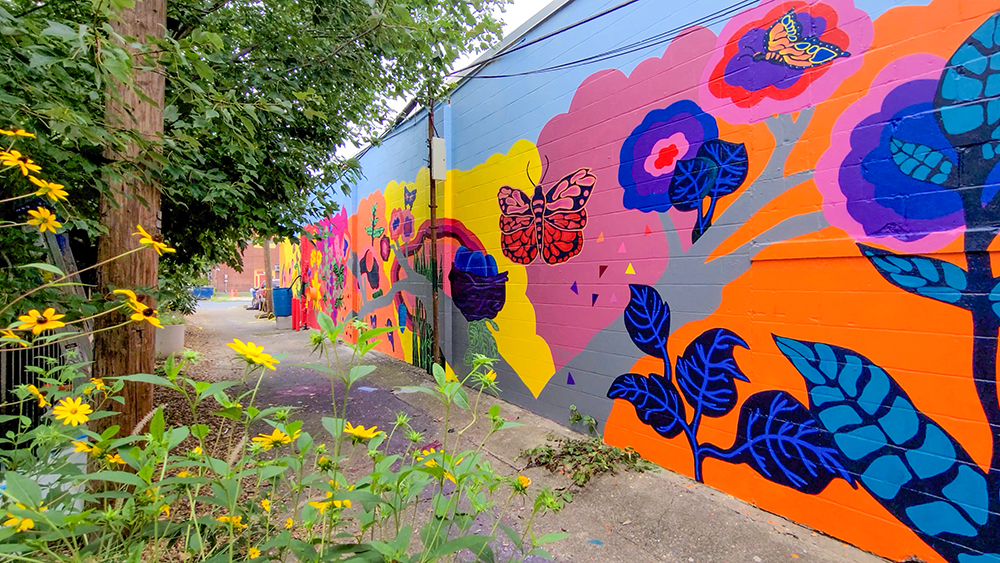
“When you see something beautiful, you want to take care of it, so I just hope the community does their due diligence and keeps the area clean, and enjoys the mural as much as I enjoyed working on it,” said Martin.
The Environmental Education Grants Program, established by the Environmental Education Act of 1993, mandates that five percent of all pollution fines and penalties collected annually by the Department of Environmental Protection be set aside for environmental education. Since its inception, the Environmental Education Grants Program has provided more than $11.5 million to support environmental education throughout Pennsylvania. Learn more about DEP’s Environmental Education Grants.